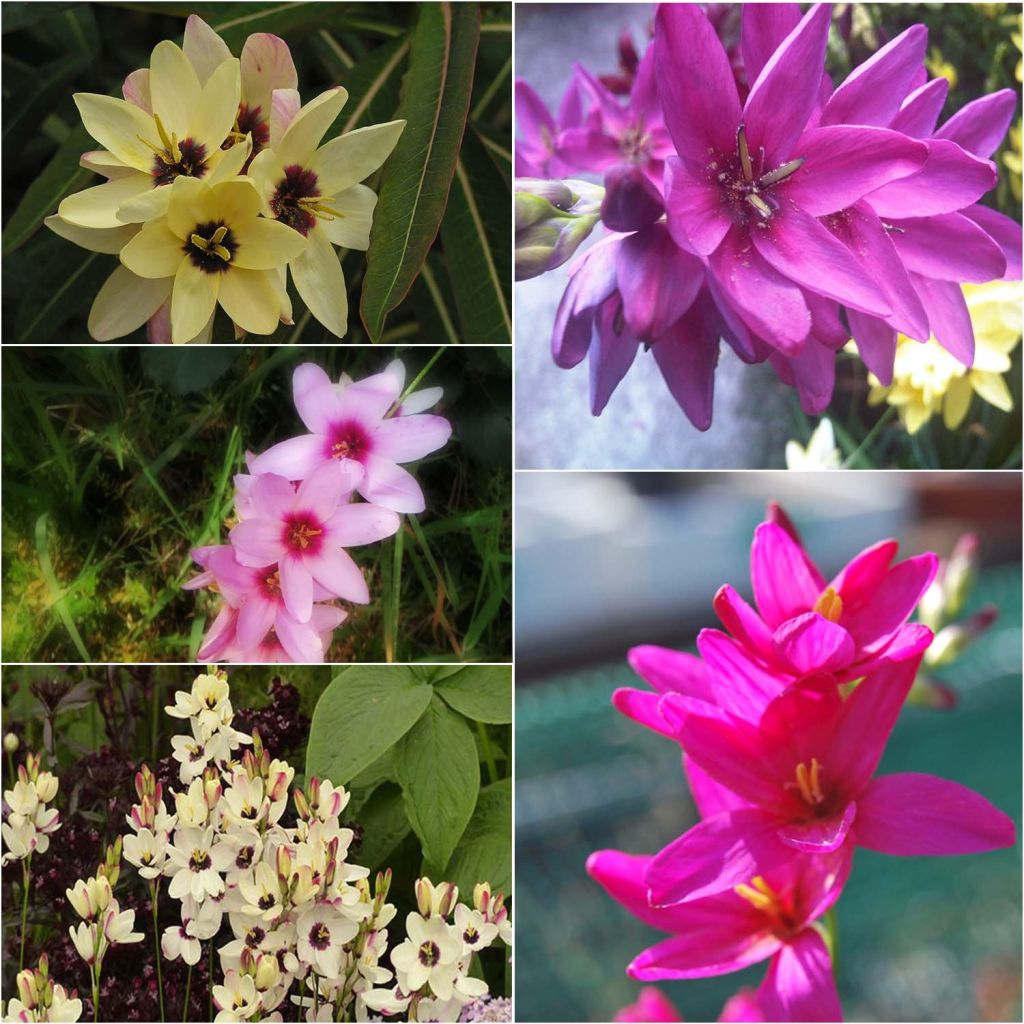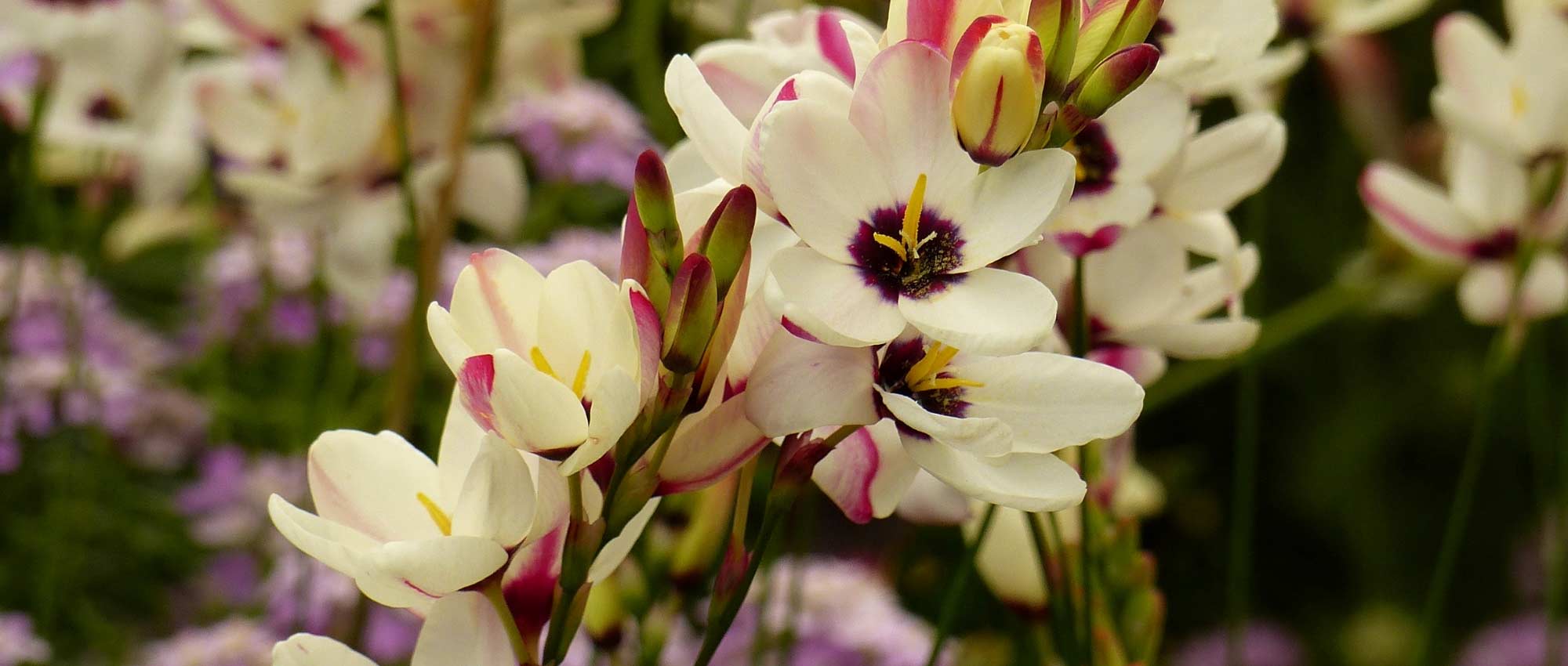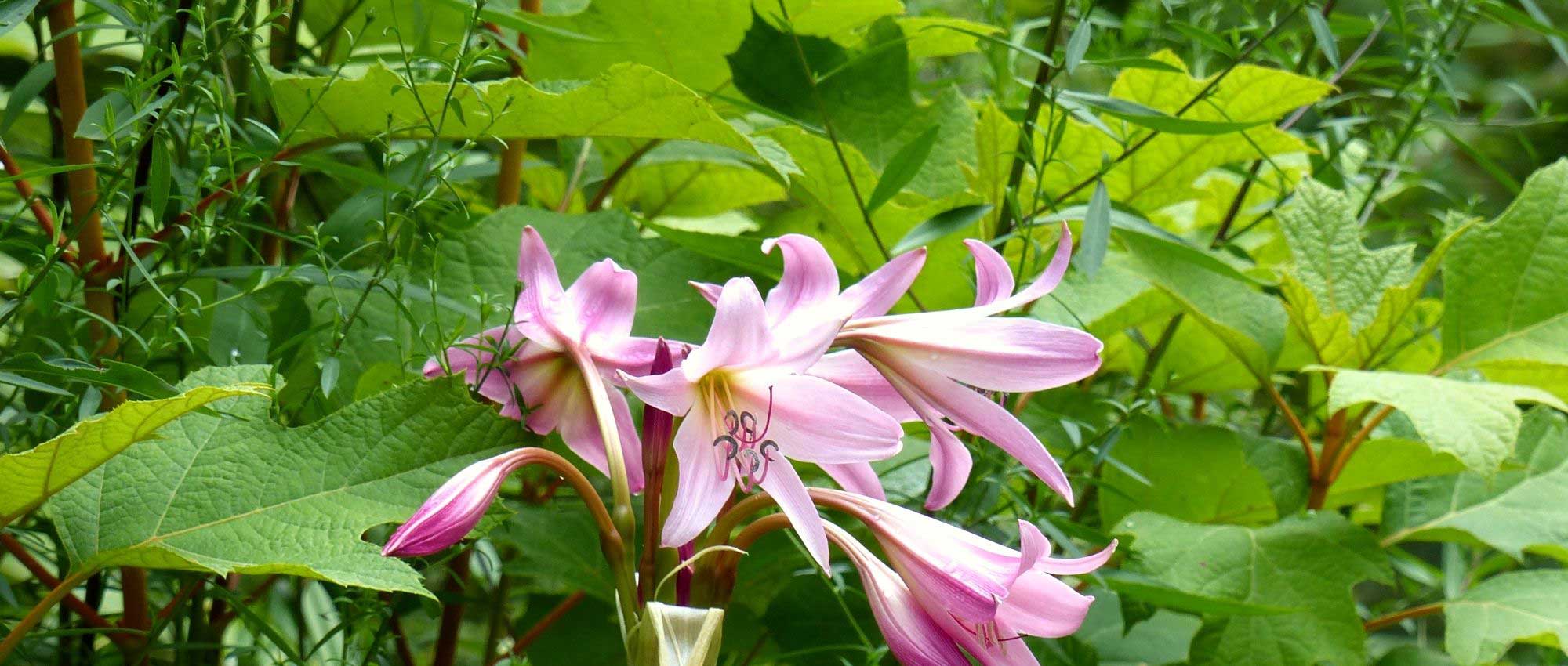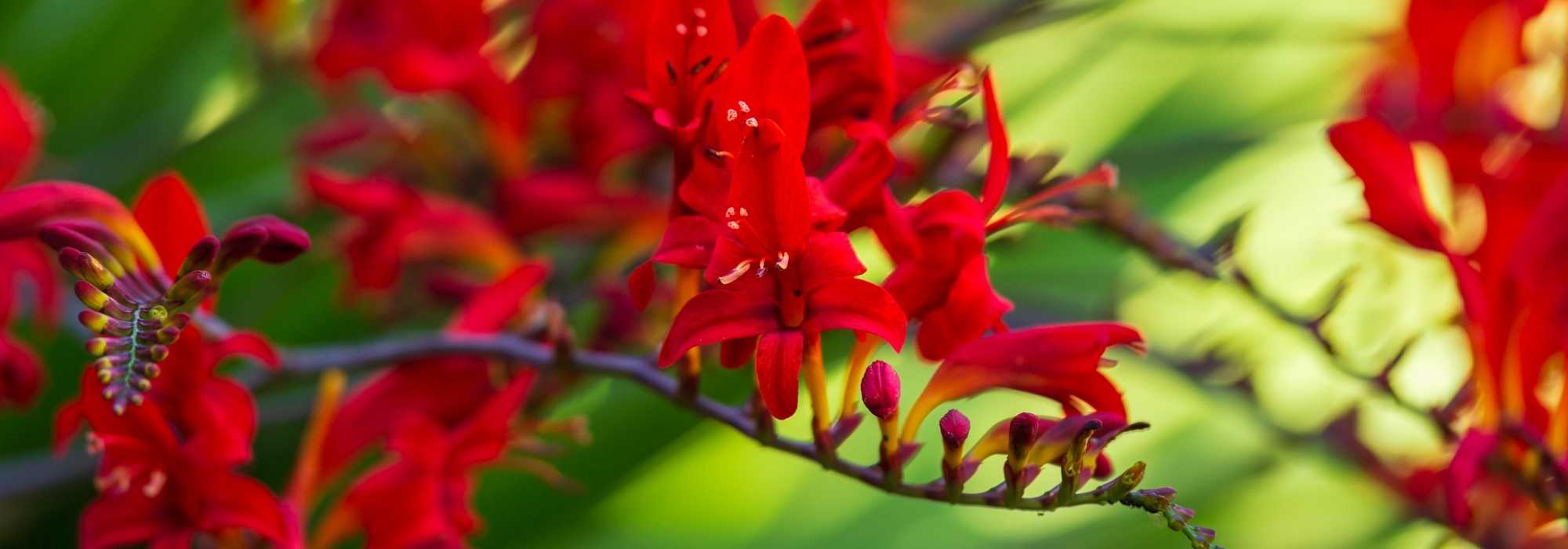

Ixia Mix - Corn lily
Ixia Mix - Corn lily
Ixia Mix
Corn Lily, African Corn Lily
The small bulbs have been planted in the PACA region, I hope they will take root...
Thierry, 14/03/2019
Special offer!
Receive a €20 voucher for any order over €90 (excluding delivery costs, credit notes, and plastic-free options)!
1- Add your favorite plants to your cart.
2- Once you have reached €90, confirm your order (you can even choose the delivery date!).
3- As soon as your order is shipped, you will receive an email containing your voucher code, valid for 3 months (90 days).
Your voucher is unique and can only be used once, for any order with a minimum value of €20, excluding delivery costs.
Can be combined with other current offers, non-divisible and non-refundable.
This plant carries a 6 months recovery warranty
More information
We guarantee the quality of our plants for a full growing cycle, and will replace at our expense any plant that fails to recover under normal climatic and planting conditions.
Would this plant suit my garden?
Set up your Plantfit profile →
Description
The Ixia hybrids in this mix gather several varieties of Blazing Stars resulting from the cross-breeding of different South African species. Each plant offers sumptuous floral spikes in summer where the star-shaped corollas cluster like foliage, displaying varied, pastel or vibrant colours, solid or bicolour, but always with remarkable luminosity. These are perennial plants with corms, semi-hardy, which can be cultivated and sometimes naturalized in mild climates, in sunny and light soil. They deserve pride of place in milder regions and are superb in large flowering pots or planted densely in flower beds. Their strong stems are abundantly adorned with beautiful cut flowers to offer or to indulge in.
Ixia are deciduous perennials with corms native to South Africa. Most species are native to the southwest of South Africa, where a Mediterranean-like climate prevails. They are close relatives of Garden Iris, belonging to the large family of Iridaceae. In this mix of Ixia hybrids, you will find flowers with a wide range of colours, ranging from white to mauve-violet, including cream, mauve, pink, salmon, orange, yellow, and red... Many have a darker macula at the base of the corolla. In Ixia, the colour of the flowers also varies depending on the soil and exposure.
In spring, Ixia forms a clump of medium green leaves, long and slender, with parallel veins, alternate and sword-shaped. Its growth is rapid. Deciduous foliage disappears at the end of summer but is evergreen in mild climates during winter. The floral stems, thin and rigid, reaching an average height of 40-50 cm (16-20in), emerge between two fan-shaped leaves, usually in June, depending on the plants and the climate: in the south, flowering is earlier and the plant goes into rest in summer. The flowering takes the form of spikes of 7 to 12 flowers, 3 to 5 cm (1 to 2in) in diameter, in the shape of star-shaped cups, whose tubular corolla is formed by six fused tepals. The flattened, brown, fibrous corm of this plant is semi-hardy, and it resists short frosts of around -5 °C (41°F) to -10 °C (50°F).
Ixia thrives in sunny borders or fields of plants. However, in the southern regions of France, they prefer east or southeast exposures. They will thrive in light, well-drained, sandy, fresh soil in spring and autumn and dry in summer. Ixias pair well with spring bulbous plants with late flowering, such as allium giganteum, arum, eremurus, white lily, and Abyssinian gladiolus. In rock gardens, they bring a delicate and shiny note, both light and very present, in the company of catmints, stipa and pennisetums. Ixia is a perfect plant for planters and pots: this mode of cultivation allows both to enjoy their magnificent flowering up close while protecting them from severe frosts when stored. Finally, they are excellent flowers for cutting.
Plant habit
Flowering
Foliage
Botanical data
Ixia
Mix
Iridaceae
Corn Lily, African Corn Lily
Cultivar or hybrid
Planting and care
Plant the Ixia bulbs in autumn in groups of 8 or 10 arranged in a staggered pattern in a mixture of sand, leaf compost, and ordinary soil. The substrate should be draining and lightweight but fertile. Planting in the ground in autumn is only possible in regions with mild winters by protecting the bed with a thick layer of dry leaves. For growing in pots, use the same substrate, adding bone meal to support flowering. Place the pots sheltered from frost and winter rains. Once the shoots appear, place the pots in a bright and slightly heated room. Once the risk of frost has passed, put your containers outside in the sun. As soon as the first summer heat arrives, water becomes more abundant to support flowering. After flowering, the bulbs should be kept dry until autumn.
Planting period
Intended location
Care
Planting & care advice
-
, onOrder confirmed
Reply from on Promesse de fleurs
Haven't found what you were looking for?
Hardiness is the lowest winter temperature a plant can endure without suffering serious damage or even dying. However, hardiness is affected by location (a sheltered area, such as a patio), protection (winter cover) and soil type (hardiness is improved by well-drained soil).

Photo Sharing Terms & Conditions
In order to encourage gardeners to interact and share their experiences, Promesse de fleurs offers various media enabling content to be uploaded onto its Site - in particular via the ‘Photo sharing’ module.
The User agrees to refrain from:
- Posting any content that is illegal, prejudicial, insulting, racist, inciteful to hatred, revisionist, contrary to public decency, that infringes on privacy or on the privacy rights of third parties, in particular the publicity rights of persons and goods, intellectual property rights, or the right to privacy.
- Submitting content on behalf of a third party;
- Impersonate the identity of a third party and/or publish any personal information about a third party;
In general, the User undertakes to refrain from any unethical behaviour.
All Content (in particular text, comments, files, images, photos, videos, creative works, etc.), which may be subject to property or intellectual property rights, image or other private rights, shall remain the property of the User, subject to the limited rights granted by the terms of the licence granted by Promesse de fleurs as stated below. Users are at liberty to publish or not to publish such Content on the Site, notably via the ‘Photo Sharing’ facility, and accept that this Content shall be made public and freely accessible, notably on the Internet.
Users further acknowledge, undertake to have ,and guarantee that they hold all necessary rights and permissions to publish such material on the Site, in particular with regard to the legislation in force pertaining to any privacy, property, intellectual property, image, or contractual rights, or rights of any other nature. By publishing such Content on the Site, Users acknowledge accepting full liability as publishers of the Content within the meaning of the law, and grant Promesse de fleurs, free of charge, an inclusive, worldwide licence for the said Content for the entire duration of its publication, including all reproduction, representation, up/downloading, displaying, performing, transmission, and storage rights.
Users also grant permission for their name to be linked to the Content and accept that this link may not always be made available.
By engaging in posting material, Users consent to their Content becoming automatically accessible on the Internet, in particular on other sites and/or blogs and/or web pages of the Promesse de fleurs site, including in particular social pages and the Promesse de fleurs catalogue.
Users may secure the removal of entrusted content free of charge by issuing a simple request via our contact form.
The flowering period indicated on our website applies to countries and regions located in USDA zone 8 (France, the United Kingdom, Ireland, the Netherlands, etc.)
It will vary according to where you live:
- In zones 9 to 10 (Italy, Spain, Greece, etc.), flowering will occur about 2 to 4 weeks earlier.
- In zones 6 to 7 (Germany, Poland, Slovenia, and lower mountainous regions), flowering will be delayed by 2 to 3 weeks.
- In zone 5 (Central Europe, Scandinavia), blooming will be delayed by 3 to 5 weeks.
In temperate climates, pruning of spring-flowering shrubs (forsythia, spireas, etc.) should be done just after flowering.
Pruning of summer-flowering shrubs (Indian Lilac, Perovskia, etc.) can be done in winter or spring.
In cold regions as well as with frost-sensitive plants, avoid pruning too early when severe frosts may still occur.
The planting period indicated on our website applies to countries and regions located in USDA zone 8 (France, United Kingdom, Ireland, Netherlands).
It will vary according to where you live:
- In Mediterranean zones (Marseille, Madrid, Milan, etc.), autumn and winter are the best planting periods.
- In continental zones (Strasbourg, Munich, Vienna, etc.), delay planting by 2 to 3 weeks in spring and bring it forward by 2 to 4 weeks in autumn.
- In mountainous regions (the Alps, Pyrenees, Carpathians, etc.), it is best to plant in late spring (May-June) or late summer (August-September).
The harvesting period indicated on our website applies to countries and regions in USDA zone 8 (France, England, Ireland, the Netherlands).
In colder areas (Scandinavia, Poland, Austria...) fruit and vegetable harvests are likely to be delayed by 3-4 weeks.
In warmer areas (Italy, Spain, Greece, etc.), harvesting will probably take place earlier, depending on weather conditions.
The sowing periods indicated on our website apply to countries and regions within USDA Zone 8 (France, UK, Ireland, Netherlands).
In colder areas (Scandinavia, Poland, Austria...), delay any outdoor sowing by 3-4 weeks, or sow under glass.
In warmer climes (Italy, Spain, Greece, etc.), bring outdoor sowing forward by a few weeks.








































